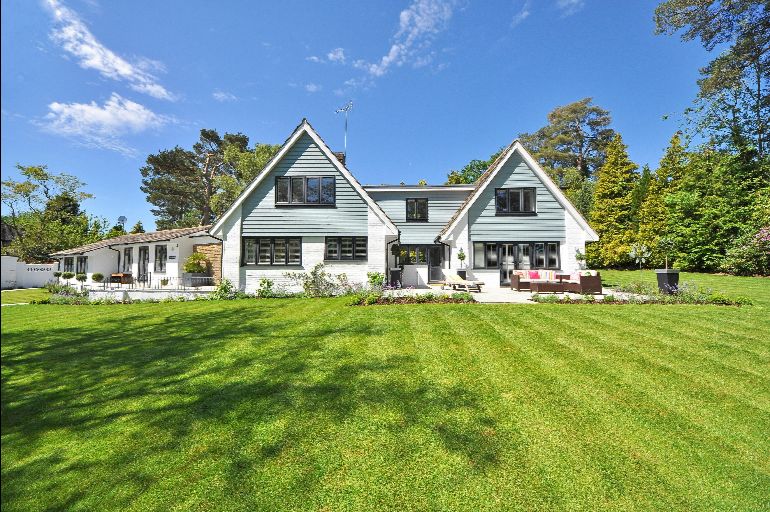When it comes to real estate, one factor stands above all others — location. No matter how beautiful a property looks or how modern its design may be, its true worth is deeply tied to where it’s situated. A prime location can increase a property’s value, attract long-term growth, and ensure better living standards. On the other hand, a poorly chosen area can limit appreciation and reduce future opportunities.
Understanding the importance of location helps buyers and investors make informed decisions that lead to lasting financial benefits.
Why Location Matters More Than Structure
The structure of a building can change over time — it can be renovated, expanded, or redesigned. But the location is permanent. This is why experts often say, “Buy the location, not the property.” A property in a prime area will always hold value, even if its design is simple.
Good locations offer convenience, accessibility, and opportunities for future growth. They’re close to essential services like schools, hospitals, transport hubs, and markets — features that make daily life easier and attract higher demand from buyers and renters.
Economic Growth and Development
An area’s economic development has a direct impact on property value. Locations near commercial centers, industrial zones, or new infrastructure projects tend to appreciate faster. As more businesses open and jobs increase, more people move to that area, raising housing demand and prices.
Investors who identify developing areas early often enjoy substantial returns when the region grows. In real estate, timing and foresight can turn an affordable investment today into a profitable asset tomorrow.
Infrastructure and Connectivity
Infrastructure is a key sign of a location’s potential. Well-developed roads, public transport, electricity, and water supply systems not only make life easier but also add long-term stability to property value. When an area is connected to main highways or public transport lines, it becomes more attractive for both residential and commercial use.
Buyers should also look at upcoming projects like new roads, airports, or metro lines, as these can quickly turn a developing area into a high-demand zone.
Lifestyle and Community Environment
The quality of life offered by a location goes beyond infrastructure. Clean surroundings, low crime rates, green spaces, and access to recreation all make a place more livable. Areas with planned communities often offer better social environments where residents can enjoy peace and security.
A well-planned housing project like Rudn Enclave demonstrates how the right location can enhance living quality and investment potential. Situated strategically near major routes, it combines accessibility, modern amenities, and a community-focused design — all the features that increase both comfort and value.
Proximity to Essential Facilities
A property’s distance from essential facilities like schools, hospitals, and shopping centers is crucial. Families often prioritize convenience and safety when choosing where to live. A location that reduces travel time to daily destinations provides better comfort and contributes to higher demand in the market.
Similarly, investors should assess the neighborhood’s long-term potential for growth. Areas with new educational institutes, business parks, and hospitals being developed nearby will likely experience a steady rise in property value.
Environmental and Safety Factors
The physical environment of a location also matters. Areas prone to flooding, poor drainage, or pollution can cause problems in the future. When choosing a property, it’s important to consider climate, air quality, and surroundings. Additionally, areas with active neighborhood watch programs or gated communities offer greater peace of mind for residents.
Cultural and Social Environment
The cultural and social fabric of an area plays a bigger role than most buyers realize. A friendly, cooperative neighborhood enhances a sense of belonging and security. Locations that promote community activities, parks, and family spaces attract long-term residents. A positive community atmosphere not only improves daily living but also increases the property’s overall appeal to potential buyers.
Investment Stability and Resale Value
A property in a good location will always find buyers or tenants more easily. Even in slower markets, high-demand areas remain stable, while less developed regions face price drops. This stability makes location the foundation of smart investing. Whether you plan to sell later or generate rental income, the right area ensures consistent returns.
Urban Expansion and Future Planning
Many investors overlook the potential of future urban expansion. City boundaries are constantly growing, and government development plans can drastically change an area’s worth within a few years. Researching master plans and zoning regulations can give insight into which areas are expected to develop next.
Buying in such locations early can yield excellent profits once the region becomes a fully developed part of the city. For example, suburbs that were once overlooked often become prime investment zones after new infrastructure or housing projects are introduced.
Balancing Lifestyle and Investment Goals
While financial returns are important, the right location should also match your personal lifestyle needs. Some buyers prefer quiet residential areas away from city noise, while others value being close to commercial centers for convenience. The key is to strike a balance between personal comfort and long-term financial growth.
A well-chosen location supports both goals — it allows you to live comfortably now while ensuring your investment continues to grow in the future.
Final Thoughts
In real estate, location isn’t just one factor — it’s the most important one. It determines convenience, growth, value, and lifestyle quality. A well-located property in a planned community provides long-term satisfaction and strong financial returns.
When evaluating potential investments, consider not just the plot or building, but everything around it — the roads, neighbors, development plans, and accessibility. A wise choice of location turns property ownership into a source of stability and success for years to come.


